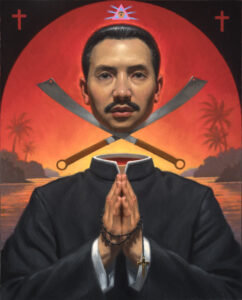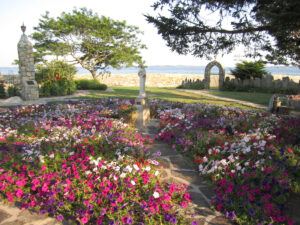Late in February, I was set to travel to London for a performance of my motet, Ne Irascaris Domine, by the London Oratory School Schola Cantorum.
A few days before my departure, I saw a tweet from renowned Scottish composer Sir James MacMillan announcing something called a “TheoArtistry” festival, to be held in St. Andrews, Scotland the week following my performance. Sir James himself was to be the lead composer panelist at this festival conference.
TheoArtistry was said to be an examination of “the power of the arts to communicate the Divine.” I jokingly replied to the tweet that “I wish I lived in Scotland,” because this project would examine precisely that area of inquiry which guides my own creative work as a composer.
Little did I know my “wish” would come true – after a fashion.
I sent the link to Maggie Gallagher, director of the Benedict XVI Institute for Sacred Music and Divine Worship, thinking this was a perfect BXVI Facebook news item. She responded by asking me if I wanted to head to Scotland and snag an interview with Sir James. “Yes!” I told her.
Then came the “Beast from the East.”
The devil is a jokester. Just as I planned to make the trek 400 miles north up to St. Andrews, a once-in-a-generation Siberian Snowpocalypse blew in, grinding even train travel to a halt. But assured by the festival director Prof. George Corbett that TheoArtristry’s music would go on regardless, over three days I navigated a brutal maze of last-minute lodgings, local trains, buses, more trains, more buses, and, finally, a car ride from two guardian-angel residents of St. Andrews and arrived just in time.
Knowing that MacMillan was a central figure in the festival’s conception, I was convinced something very important would be happening at St. Andrews. And I was right.
Sir James MacMillan is a creative figure unique in our day. He is among the top five most-performed living classical music composers. In both his music and in his considerable body of writings, he represents a bridge between seemingly incompatible worlds: in the relentlessly secularized environment of modern classical art music, he is a publicly confessing Catholic. Fulfilling commissions by many of the leading musical institutions in the world, he simultaneously spent years composing simple Psalm antiphons for a small choir in a working-class Glasgow parish which he directed. A committed modernist in his approach to composition, Sir James is also a staunch defender of the value of tradition in art. A member of a religious minority (only 16% of Scots identify as Catholic), his views on sacred music are sought out by his majority Protestant colleagues not – as is often the case – because he adopts the easy language of relativism, but rather because of his notably charitable and magnanimous engagement with others.
The focal point of the TheoArtistry festival was a concert of premieres by six young English-speaking composers. Each young composer had been paired up to work closely with graduate theologians from St. Andrews. The composers were asked to set Biblical texts on the theme of “Annunciations.”
TheoArtistry was thus an experiment in exploring what kind of music would emerge from a deep engagement between composers and theologians, without any preconditions as to the faith status of the composers themselves. A CD of these premieres was launched at a live concert event and includes pieces by MacMillan and other British composers.
I sat down with Sir James for an interview in St. Andrews’ Byre Theater, a modern lecture hall and theater complex nestled within the walls of a hollowed-out Gothic church – and an almost too-perfect metaphor for some of the topics we would be discussing. As the stage crew prepared for the next conference panel on “Composing Sacred Music for the 21st Century”, we found a quiet spot near the back of the theater.
I began by asking just what “TheoArtistry” meant in the context of this festival. Casually dressed in jeans and an old sweater, and speaking a warm, unmistakably Scottish brogue, he began by describing his own experience of preparing the composition of his 2014 St. Luke Passion:
“In the preparation of my St. Luke Passion, Jeremy gathered a group of Cambridge scholars and Duke scholars that would meet – I think we met two or three times – going back and forth across the Atlantic, engaging in wide-scale conversations,” he told me.
By “Jeremy” MacMillan meant Jeremy Begbie, the renowned Duke University theologian and musician (formerly of Cambridge University) who is at the forefront of the modern theological aesthetics movement.
“And it was a very generous thing for him and them to have done,” he continued, “because it was all part of the process of composition for me. It allowed me to feed their expertise into my search for knowledge and, indeed, the context for writing the St. Luke Passion. And it seemed to work.”
I observed that I knew any number of composers who would not welcome that kind of intrusion into their creative autonomy. He nodded knowingly:
“That’s right. To me, it wasn’t a problem. If it had been a problem I would have walked away from it. If they were trying to sort of impose the one way of doing Luke, that wasn’t what I was in for. So, it worked for me. I was allowed to absorb a lot of information and scholarship through these discussions, and I think it made the Luke a better piece. Or certainly, a more deeply researched piece than it would have been. In the olden days, I suppose I would have done it through my own books. But that might have taken a long time, or it might have gotten mixed up with irrelevant things whereas because of Jeremy’s judicious choice of who the scholars were, it was all highly pertinent to what I needed.”
“So I thought, well if this works for me, might it be able to work in a different way for the next generation of composers? So, without imposing any theological values on them, ITIA put out a call for composers around the world – I think 150 or so applied – and we whittled it down to these six very bright composers,” he told me.
ITIA – the Institute for Theology and Imagination in the Arts – was founded at St. Andrews University in 2000, merging an existing program with Begbie’s Cambridge project, “Theology Through the Arts.” The TheoArtistry composer’s project, then, was modeled directly on MacMillan’s St. Luke Passion experience:
“All it was, all it is, was the theologian’s presentation of a perspective on a particular aspect – in this case, it was on what you might call “pre-Annunciations” – of the Old Testament. And what could a young theologian say about these things that could inform an outlook in someone chosen just for their musical skill and brilliance, and to direct them in a way that might produce a particularly informed – theologically informed – setting? So maybe this dialogue process, this setting up of a forum for dialogue between musicians and non-musicians can actually have some practical value. So it’s not just talking shop, it’s not just a conference of great academic minds.”
At the first festival session, the six composer-theologian teams talked about the collaboration process, which spanned almost 9 months, followed by a recorded playback of the pieces that resulted. I was struck by the close bonds the composers and theologians seemed to have formed, and asked MacMillan about the nature of his interaction with the composers:
“Well, at first, there was a very light touch. The composers came initially to hear a roundtable discussion by myself and others on these topics. So in a sense, it wasn’t on a heavy-duty, or one-on-one basis until the music appeared several months later,” he said. “Then we held a workshop with the choir, and the composers received suggestions from me, the theologians, the choir director, and the choir itself. I made sure I got time with each of them individually, but these advanced young composers did not need any input regarding compositional basics. My comments involved broader questions of structure and polishing.”
As our conversation continued, the topics broadened out into larger themes, especially the relationship between music and the sacred:
“I have often noticed that among those who love music, whether they’re religious or not, that this description of music as ‘the most spiritual of the arts’ keeps coming back. And that’s quite a curious thing for secular people to say,” Sir James mused.
I replied, “You’ve written elsewhere that ‘you can’t divorce the spirituality from music or you’ll kill it.’”
“Yes,” he replied, “And it’s quite a curious and intriguing thing for secular people to constantly reference ‘the spirituality’ of music. For skeptical people to use that word so much – and maybe they mean different things – but they mean that music seems to penetrate them in a way that other arts and other aspects of culture don’t. And I think that’s there’s an acknowledgment of a truth and a power of music, a numinous power of music, even in just such a simple statement, a simple claim that ‘music is a spiritual art form’ that even secular people are prepared to make. They are prepared to make that claim, without probing it too deeply, that there’s some kind of deep truth in it: Perhaps music has this ability to open a window on the sacred and the divine. These last conference presentations have been for me fascinating, especially regarding Wagner’s central role in all of this.”
Except, perhaps, for his ‘Parsifal’, I observed, Wagner is not a composer whose work is generally regarded as ‘sacred’ – suffused with Norse mythology, certainly – but ‘sacred’?
“Yes,” he nodded. “Wagner has a central role in all this. There wouldn’t have been these Elgar oratorios if it hadn’t been for Wagner, and to an extent, Poulenc and Stravinsky and others, of course, reacted against Wagner. But Wagner brought this search for the sacred right into the heart of modernity. Without Wagner, and especially Parsifal and Tristan and Isolde, there wouldn’t have been this constant search for the sacred in music throughout the twentieth and twenty-first centuries.”
This was quite a sweeping claim – and new to me. The received wisdom is that Wagner laid the foundations for the modernist rejection of traditional harmony and form resulting in what musicologist Carl Dahlhaus dubbed modernism’s “Great Disruption.”
This view of Wagner and modernism was certainly the gospel in the graduate music schools of the 60’s and 70’s where many composers of my generation struggled to find our voices in the midst of a doctrinaire, brutalist rejection of beauty. We were told that to search for inspiration in the pages of musical tradition was to make ourselves “irrelevant.” So Wagner as the foundation of a ‘search for the sacred’ in the 20th and 21st centuries? I asked MacMillan to flesh this out:
“Michael Tanner, the Spectator’s music critic, says that the two greatest pieces of musical religious art in last 200-300 years are the St. Matthew Passion and – not Parsifal — but Tristan und Isolde,” he said.
Tristan und Isolde? This is not generally regarded as a religious work, much less a Christian one, with its tale of magic potions and erotic love:
“Yes, but Tanner thinks that Tristan is a religious work of art,” Sir James replied. “Why does he think that? Well, I think the answer, or at least the question, is explored in a wonderful book by Roger Scruton, this incredible book called Death-Devoted Heart – Sex and the Sacred in Tristan und Isolde. And Scruton amplifies Tanner’s claim that Tristan is a religious work of art because it is a work of art in which human beings are being impacted upon by supernatural forces. Scruton also says that Act I in Tristan is a Eucharistic scene because through Divine intent – but also human accident – Tristan and Isolde fall in love. They’re not meant to. Tristan is there to steal Isolde away from Ireland to take her back to the King in Cornwall and a loveless arranged marriage. So, Isolde hates Tristan and Tristan cares nothing for Isolde. And through the intervention of a Communion cup – remember – that is so central to Act I. . .”
“Right,” I interjected, “that potion is always served in a vessel made to resemble a chalice.”
“Sure this potion, this ‘love-drink,’ is an accident, of course, but divinely inspired,” he responded. “They lose themselves to love. It’s purely pagan, erotic and sensual and romantic and you could say that the Christian symbolism is hidden. But, actually when you start probing it’s not as hidden as all that. In many ways, as Scruton points out, the Christian symbolism is absolutely central. It’s no accident that the great Catholic composer Messiaen was obsessed with Tristan und Isolde.”
MacMillan paused a moment before continuing his theme:
“So, Scruton makes the claim that this is indeed a religious work of art, as Tanner claims, and it is a Eucharistic work of art, but also the progenitor of so much that has happened in not just modern music, but in modern art ever since. The curious thing, when you think about it a little bit, is the fact that a whole range of composers since Wagner in the twentieth and now twenty-first century, have been profoundly religious men and women, in one way or another. It is astounding. Stravinsky was as conservative in his theology as he was revolutionary in his music. The other great polar figure of early modernism, Schoenberg, reconverted to a practicing Judaism after he left Germany. His later works are full of that Jewish theology and culture and tradition.”
“The Shema Yisrael in Survivor from Warsaw, his Moses und Aron,” I added.
“Yes. It’s no surprise, I think, that John Cage went to study with Schoenberg because I think Cage saw in him a fellow mystic,” Sir James continued.
“I thought Cage was drawn to him because Schoenberg was seen as the one who made the final break with tradition with his 12-tone technique,” I interposed.
“Certainly,” MacMillan agreed, “but I think it was more than that. I think it was something to do with mysticism. I mean Cage followed his own route through mysticism: the ideas and the religious of the Far East. But you know the curious thing about that piece 4’33”, that four minutes and thirty-three seconds of silence which was a kind of provocation to the culture and their listening sensibilities or lack thereof? The original title for that was: Silent Prayer. So that was Cage’s initial concept. And there are academics pushing the idea he got the idea for Silent Prayer by wandering into an American Catholic church in the 1950s. And of course, as you know when silence descends in the Extraordinary Form Mass, it’s at the moment of Consecration, which usually lasts about four and a half minutes.”
It took a moment for the impact of this to hit me.
“That is a simply astonishing new perspective on Cage and his most iconic piece,” I responded, still trying to absorb the implications of such a statement.
“Yes,” he agreed, “This is a complete reassessment of modernity and modernism through theology, one that is required and timely. It means that even before we got on to Messiaen and all those composers who came out from behind the Iron Curtain after Shostakovich: Pärt, Penderecki, Gorecki, Kancheli, Schnittke, Gubaidulina; and in this country, Tavener, Jonathan Harvey, and many others. You could argue, therefore, that our discussion about modernity and music would be incomplete without a discussion of a search for the sacred. Which could even be argued has been central to modernity. It’s not just the so-called “conservative” composers that have been marked by this, but very cutting-edge modernist figures such as the ones I’ve mentioned have been among those most affected by Wagner’s example.”
Turning to one final question, I read to Sir James a quote from something he once wrote:
“Mary opens the door the very heart of God. And in the silence of my own contemplation, in that necessary stillness where all composers know that music mysteriously begins, the following words from our sacred Liturgy have lodged themselves in the womb of my soul, trapped in a scarlet room, gestating gently with a tiny pulse: Hail Mary, full of grace…”
I asked Macmillan if his Catholicism was, in fact, as deeply Marian in its spirituality as this quote would imply:
“I think so, yes. I mean this idea of inspiration, you know, the in-breathing – which is what inspiration means – and the power of the Spirit even to the extent of the Spirit being instrumental in the conception in the Incarnation of Christ, it was a living reality with Mary and her Son. But perhaps it’s a living reality in every composer’s, in every artist’s, mind as well. It’s the same in-breathing process, the inspiration, the breathing in of that divine essence and spirit that gives birth to our little incarnations, which can be pieces of music, works of art, so in that sense, being open to the Spirit, being open to being divinely inspired is a Marian concept, and an inspiration for all Catholics.”
So, “Be it done unto me according to Thy Word,” I asked?
“That’s right,” he said, as we ended the interview, “Which is the best prayer a composer can have as they start every day.”
Frank La Rocca is a California composer, known particularly for his sacred choral music. His oratorio “A Rose in Winter” on the life of St. Rita of Cascia, recently won third prize in the American PrizeOpera and Theater category. www.franklarocca.com




